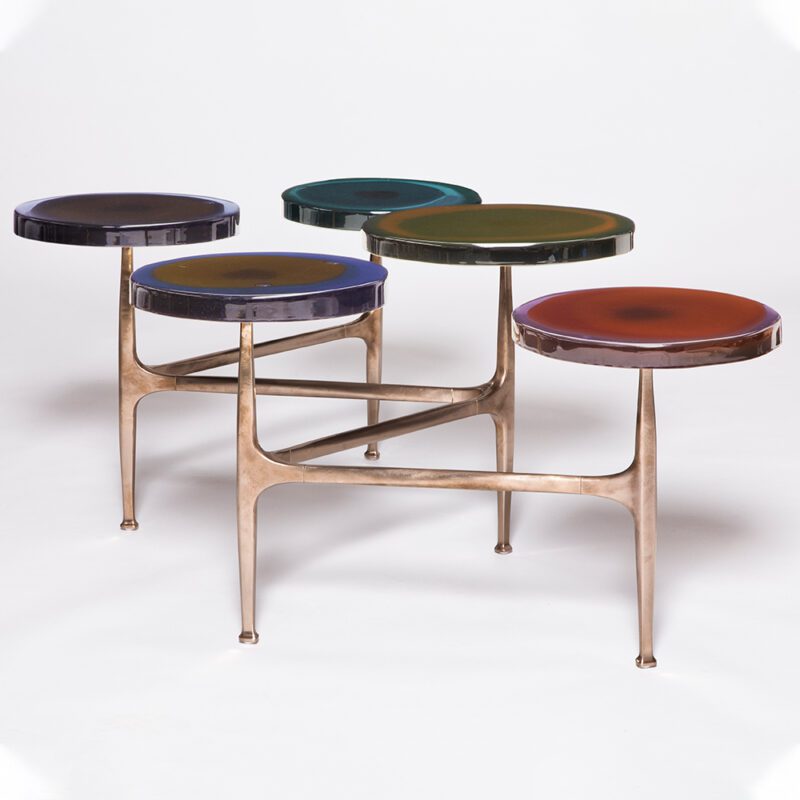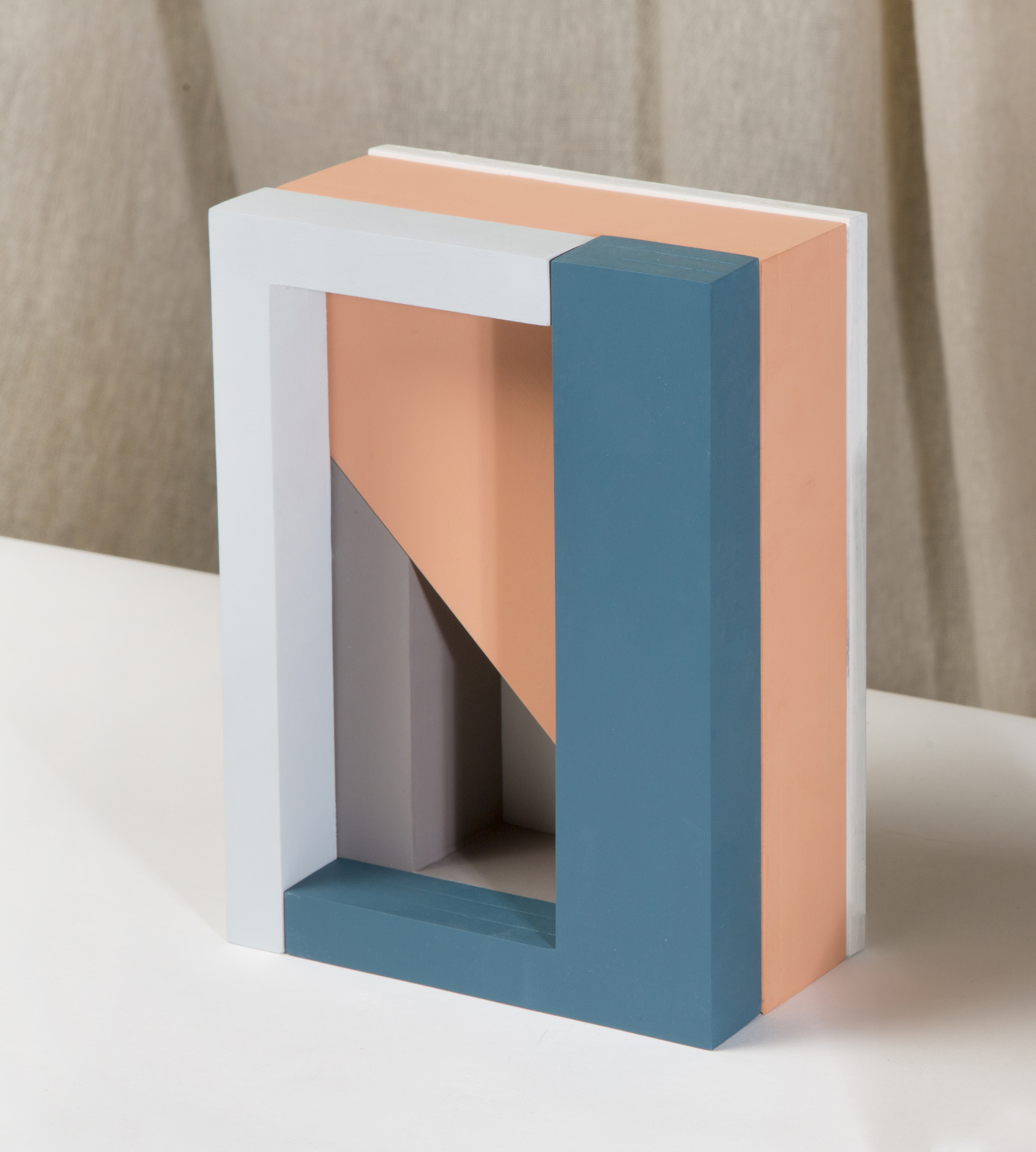

10 Designers Breaking the Mould of Resin Crafts
While resin has a long history of use, with records dating back to Ancient Greece, the material recently became a trend in design that seems to be turning into something more permanent. This week’s Adorno edit will showcase the designers who are using this versatile material in their work.
For background, there are two types of resin. Natural resin is defined as “a sticky flammable organic substance, insoluble in water, exuded by some trees and other plants”. Synthetic resins are similar to natural resins physically, but are man-made and differ from their natural counterparts on a chemical level.
Resin’s versatility helps make it attractive to designers. Its properties allow for it to take on many forms. This can be useful when trying to imitate other materials, especially heavier ones; resin can do this while remaining lightweight. Additionally, both natural and synthetic versions are extremely durable due to the chemical makeup of the material. This means it is quite firm and not as prone to breakage or deformities as some other materials. Finally, resin is versatile in the ways in which it can be used – not only can it be the main material in a piece, it can also be used as a varnish, allowing more delicate materials to gain its durable properties.
A material with the functionality of resin is bound to lead to many unique creations, ten of which are included in this edit.
This week’s resin edit features the work of Charlotte Kidger, Draga&Aurel, LAS ÁNIMAS, OPERE VARIE, Ragna Ragnarsdottir, Roxane Lahidji, Studio Plastique, Studio Yoon Seok-hyeon, T SAKHI, and Theodora Alfredsdottir.
Roxane Lahidji, Mixing tree resin with salt to create marbled side-tables
In ancient times, salt was rare and costly. Yet, since the industrial revolution, it has become so cheap and easily available that we no longer recognise its value. With “Marbled Salts”, Roxane Lahidji explores new possibilities, reinventing salt as a sustainable design material. She has made use of its unique physical properties as a self-binding composite to create a set of tables and stools. By mixing it with tree resin, she gives it shape and strength. Coal powder and the natural colour variations in salt mimic the aesthetics of expensive natural stone such as marble. Herein, she draws a contradictory parallel between the flexible versatility of salt and the material language of heavy, solid rock.
Visit Roxane Lahidji’s showroom, including “Marbled Salts” Coffee Table (€1.500 ex. VAT)
Draga&Aurel, Casting colorful resin in multiple layers
The Agatha table collection is formed from cast resin and cast bronze. Transparent and colorful table tops are entirely made by hand in the designer’s laboratory of Lake Como. The coffee table is a part of the “Transparency Matters Collection”, which reflects our use of transparent materials as well as a deeper exploration of what transparency can mean in art and design.
The process of creating the piece requires a special technique of casting coloured resin into the mould in three layers.
Visit Draga&Aurel’s showroom, including “Agatha” Large Table (€7.426 ex. VAT) and “Agatha” Small Table (€5.721 ex. VAT)
Charlotte Kidger, Making tactile surfaces from a unique composite of waste materials
Table 01 is made from recycled polyurethane foam dust and resin to create a new durable composite material. The material’s characteristics are highlighted within the table to show both it’s natural textures as well as those which are refined and controlled. Sculptural and functional elements are equal within this handcrafted piece.
Visit Charlotte Kidger’s showroom, including “Industrial Craft” Table 01 (€2.555 ex. VAT)
Studio Plastique, Making wood resin-based material with surfaces of diverse composition
The collection of boxes for the “Out of the Woods” project are the result of a holistic approach to the way we use resources from the forest, paying tribute to their beauty. The boxes play with constructive proportions in its multiple surfaces: wooden details and resin-based material surfaces of diverse composition. Species of trees, for example, white pine, red pine, and yellow pine as well as their bark, needles, leaves, and industrial residues, but also charcoal as a residue of the production of natural tar combine into the palette of sensible possibilities that the collection aims to showcase.
Visit Studio Plastique’s showroom, including “Out of the Woods” N.3 (€830 ex. VAT) and “Out of the Woods” N.1 (€720 ex. VAT)
Studio Yoon Seok-hyeon, Using natural glazing from the ‘Ott’ tree to glaze ceramics
This project, “Ott / Another Paradigmatic Ceramic”, aims to actualize ceramic recycling for its reproduction through introducing a potential alternative glazing material, Ott, by applying it to domestic ceramic objects to experiment with its practicalities and aesthetics.
“Ott” is a traditional Korean lacquering material. It’s a natural resin from the Ott tree and was widely used as glazing for woodenware in the past. To glaze Ott on the ceramic surface, it doesn’t need to be baked, as it simply dries out.
Visit Studio Yoon Seok-hyeon’s showroom, including the “Ott / Another Paradigmatic Ceramic” series
Theodora Alfredsdottir, Using jesmonite and moulds in a new way
Mouldmaking is fundamental to many manufacturing processes, both in small batch productions and in mass manufacturing. In those processes, the mould is indispensable for bringing the desired object into existence. When the mould has been used to cast however many objects, it is cast aside and the focus shifts onto the object it has created. Theodora Alfredsdottir explores ways to answer the question: “Is it possible to extend the moulds active life with subtle interventions and by doing so, maintaining its value after the casting process by making it as desirable as the realised object?”
The colorful piece is the mould for the bookend. After the desired number of bookends had been cast the mould was painted and glued together. The different colours indicate how the mould came apart to get the object, the bookend, out. The moulds are filled with jesmonite, a durable material made of a combination of an acrylic liquid and a gypsum base.
Visit Theodora Alfredsdottir’s showroom, including Mould 3 (€360 ex. VAT)
OPERE VARIE, Mimicking stone with resin


Each vase is poured, pigmented, and worked on by the artists up to its semi-transparent, mineral appearance. The reflective surface includes a hole placed to accommodate a floral composition of fresh or dehydrated essences. The surface reflects the floral composition like a traditional Ikebana vase whose water is enigmatically crystallized.
The material absorbs the light of the environment in a particular way with a slight degradè.
Visit OPERE VARIE’s showroom, including the “Opera”, “Balletto”, and “Concerto” Vases (€739 each, ex. VAT)
LAS ÁNIMAS, Resembling hand sculpted resin to look like blown glass
KERU is a collection of unique pieces made of solid resin. Each one of these totems has been designed inspired by ancestral cultures, hand-made through a lost mould technique and patterned using a palette of acid tones that decontextualize them.
Their reflections, translucency, and melted look resemble that of blown glass, but it’s in the volume, textures, and the craftsmanship involved in their manufacture, where the value, charm, and magic of these artworks lie. The KERU vessels are conceived as functional talismans. Their energy flows from their duality between art and usage, shamanic power and objective reality.
Visit LAS ÁNIMAS’ showroom, including “KERU” vessel, N.212 (€1.983,20 ex. VAT)
T SAKHI, Preserving fragments from Beirut factories in casted resin
The “Reconciled Fragments” collection is inspired by the notion of decomposing materials as fragments in order to recompose them into one solid whole. “Reconciled Fragments” interprets this movement with gathered waste of Forest Green marble and aggregates of brass powder from the surrounding local factories in Beirut, which are dispersed onto an organic-shaped wooden mould. Resin is later poured to unite the materials into one rich texture with an uncontrolled pattern. After solidification, the resin slate is cut to a 2 cm thickness and carefully hand-crafted to chamfer the edges to 5 mm and allow for transparency in the material that highlights the different layers of depths of the aggregates. It serves as the top of the table that rests on an oxidized bronze or resin base.
Visit T SAKHI’s showroom, including “Reconciled Fragments”, Side Table (€3.600 ex. VAT)
Ragna Ragnarsdottir, Building landscapes by pouring resin


By working at the intersection of design, art, craftsmanship, and production, the designer explores new creative processes. Ragna Ragnarsdóttir is constantly looking for innovative ways to mix materials with the mission to create interactivity between the product and the user.
Coral Vase II is a flower vase built up by layering and coloring resin in a specific way. Take a closer look and you may find meaning, landscape, or significance in the colorful graphic.
Visit Ragna Ragnarsdóttir’s showroom, including Coral Vase II (€700 ex. VAT)




















Responses